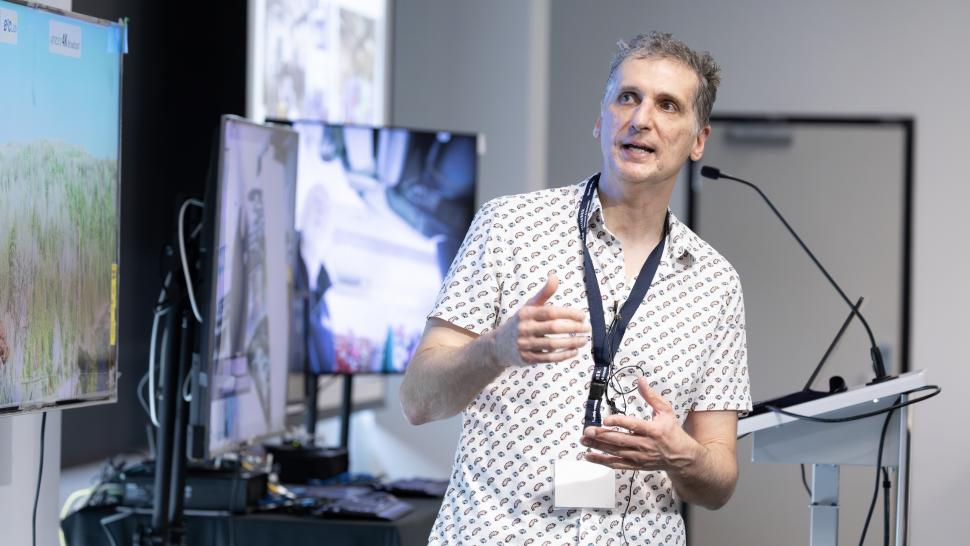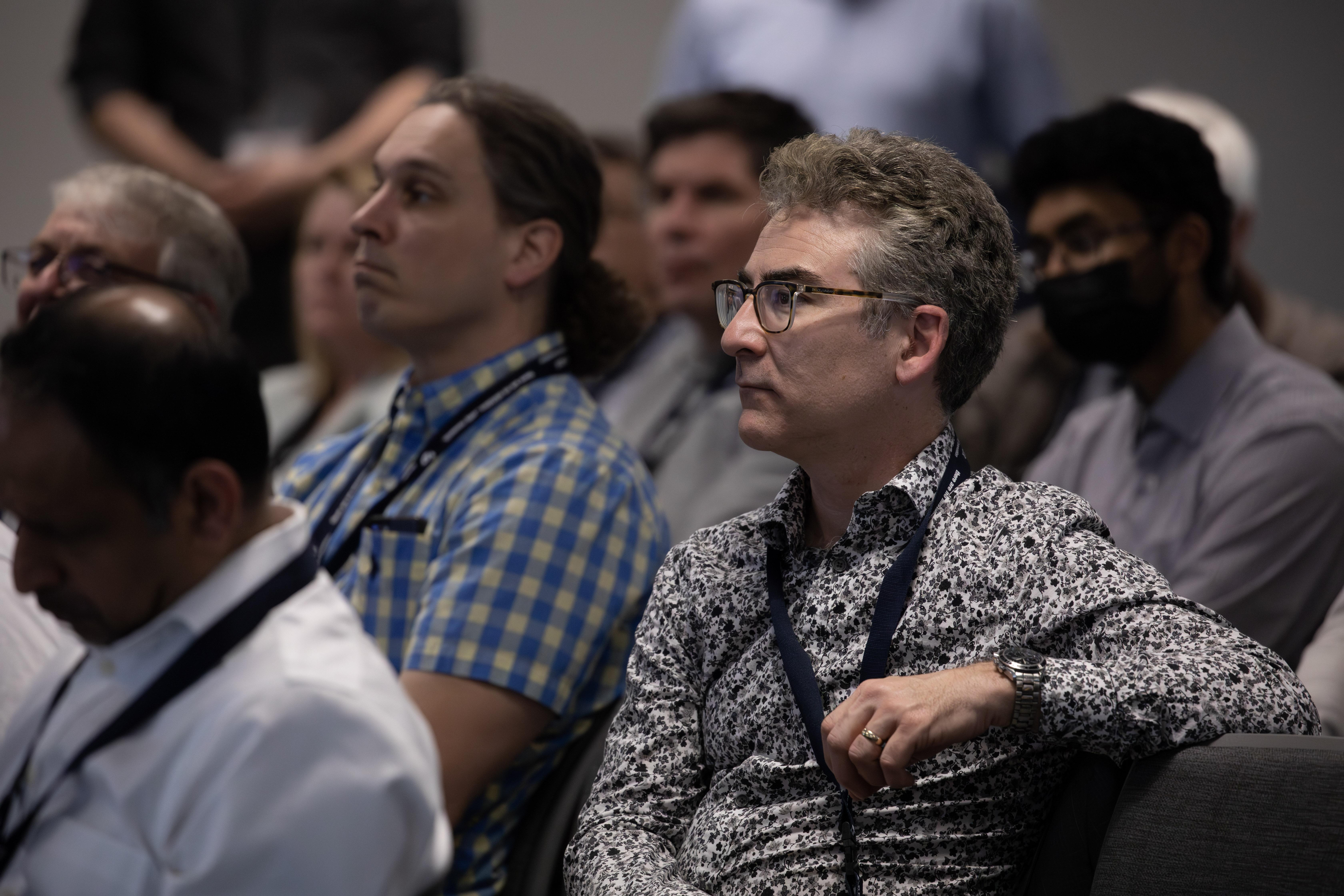
Humber College’s Broadcast-Broadband Convergence (B²C) Lab that’s at the cutting-edge of developing next generation television and data delivery applications was showcased to the wider community during a two-day open house in May.
The B²C Lab is the first of its kind in North America and is located at the Barrett Centre for Technology Innovation at North Campus. The lab explores multisectoral applications using the new IP-based ATSC 3.0, a next generation terrestrial broadcast transmission standard, set to replace the current North American standard, ATSC 1.0.
The ATSC 3.0 terrestrial broadcast and datacast system can integrate with other global data delivery standards, including wi-fi and 5G. It offers enhanced audio and visual features for television, full broadcast mobility and is currently the world's most efficient one-to-many data delivery system.
“With ATSC 3.0, the way we experience television and receive streamed content including news, sports and emergency alerts or data in our connected vehicles could soon be revolutionized,” said Orest Sushko, director, B²C Lab. “Humber’s new lab is uniquely positioned to develop novel ATSC 3.0 applications that also converge with other global IP data delivery networks including 5G. Working with a portfolio of partners across multiple industry sectors will enhance the experience for Humber students in pioneering innovation in broadcasting and datacasting solutions.”
The lab has acquired Canada’s first and only ATSC 3.0 over-the-air (OTA) developmental broadcast license to support its research initiatives. This includes the creation of a world-class OTA broadcast testbed covering the Toronto region with multiple ATSC 3.0 transmitter/antenna sites to facilitate development and testing of an ATSC 3.0 broadcast inter-tower communications network. Additional technology clusters in the lab will include microwave testing equipment and an RF anechoic test chamber supporting the design and testing of a wide range of antennas, wireless devices and prototypes.
Supports multidisciplinary research
Sushko noted that guests at the open house included industry leaders and research scientists who had travelled from as far away as the United States and South Korea.
The B²C Lab supports multidisciplinary research and will hire approximately 150 students over the next five years from various programs and faculties at Humber. Students are at the centre of leading-edge research in the B²C lab alongside faculty and industry partners.

Humber's research with industry stakeholders incorporates several areas of research including television interactivity, data delivery and GPS augmentation and back up using TV transmission towers as part of a broadcast positioning system (BPS).
"Through our industry partnerships, with companies such as Avateq and Pelmorex, and our supporting organizations including Rogers Communications, Bell Media, and the North American Broadcasters Association, among others, Humber is well-positioned to harness the capabilities of the ATSC 3.0 television broadcast standard and to develop applications that can be used by Canadians and people around the world in the years to come," said Humber College President and CEO Ann Marie Vaughan. "With our partners, Humber is conducting ground-breaking research and providing exceptional opportunities for our students to learn and gain valuable experience that will benefit them in the workforce."
Emerging technology being adopted around the world
Over the two days, those in attendance were introduced to the lab and were invited to attend presentations covering a variety of subjects including a comparison of ATSC 3.0 and 5G broadcasting, ATSC 3.0 Direct-to-Mobile (D2M) demonstration, Direct-to-Vehicle (D2V) applications, remote education delivery model and a ATSC 3.0 First Responder Network demonstration, among others.
Televisions that were broadcasting in ATSC 3.0 4K were also on display with over-the-air signal generated from Humber’s OTA test bed.
Madeline Noland, president of the Advanced Television Systems Committee Inc., spoke glowingly about the lab and the work its team is doing. Noland noted that many countries around the world are adopting the emerging technology.
In 2021, Humber College was awarded a joint Natural Sciences and Engineering Research Council of Canada and CFI College Industry Innovation Fund grant valued at $4.5 million to support the lab’s infrastructure and growth of applied research capacity.